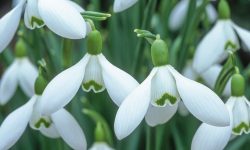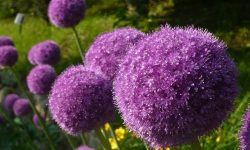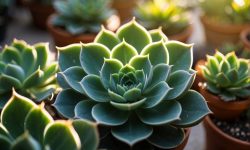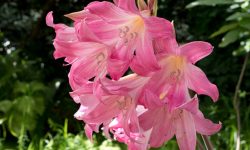There’s something timeless about the fragrance of a gardenia bloom. It lingers in the summer air like a memory you never want to forget—soft, sweet, and full of life. But behind every stunning flower is a gardener who knows just when and how to guide it with care.
If you’ve ever hesitated with pruning shears in hand, unsure whether it’s the right moment to trim, this guide is for you. Knowing when to prune gardenias isn’t just about timing—it’s about unlocking their full beauty season after season. Let’s dive into the rhythm of these enchanting shrubs and learn how a well-timed cut can lead to unforgettable blooms.
Understanding Gardenias and Their Growth Cycle
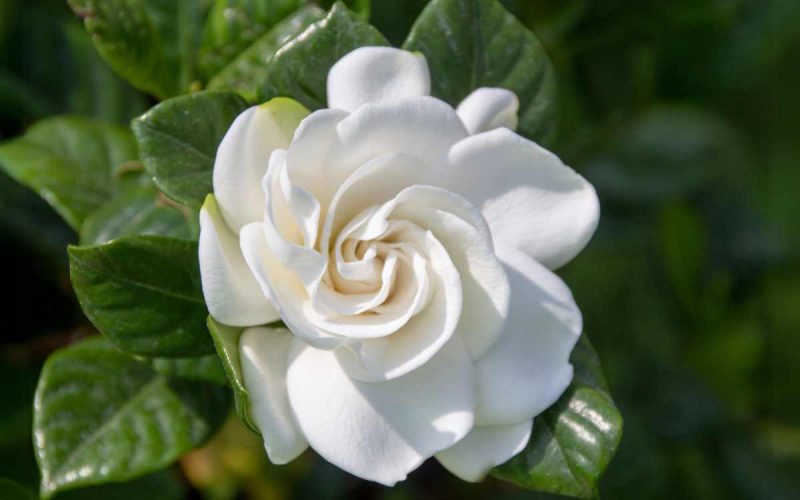
Gardenias are more than just beautiful flowering shrubs—they are living rhythms of growth, rest, and renewal. To care for them properly, especially when it comes to pruning, you must first understand how they grow throughout the year. Their life cycle is closely tied to seasonal changes in temperature, daylight, and moisture. These elements affect not only when gardenias bloom but also how they develop new growth and prepare for future flowering.
In early spring, gardenias awaken from winter dormancy and begin producing fresh foliage, followed by their signature creamy white blossoms. This blooming period often extends through late spring or early summer, depending on the climate. Once the flowers fade, the plant enters a phase of vegetative growth, where it focuses on building new branches and leaves. It’s during this phase that flower buds for the next season begin to form. By late summer into early fall, this preparatory phase winds down, and gardenias slow their growth in anticipation of winter.
Timing your pruning according to this natural rhythm is crucial. Prune too early and you may remove blooms in progress; prune too late and you risk cutting off next season’s flower buds. By syncing your care with the gardenia’s cycle, you ensure that each cut supports health, beauty, and bountiful blooms in the seasons ahead.
When to Prune Gardenias for Optimal Results
To achieve the best results when pruning gardenias, timing is everything. The ideal window to prune most varieties is immediately after the plant finishes its main blooming cycle, typically in late spring to early summer. This timing ensures that you do not accidentally remove flower buds that are already developing for the next blooming season. Gardenias begin setting new buds shortly after blooming, so pruning too late in the season—especially in late summer or fall—can interfere with this process and lead to fewer blooms the following year.
Pruning earlier in spring, before the plant has flowered, is also not recommended because many buds will already be forming along the stems. Cutting them at that stage will significantly reduce the number of flowers that appear during the growing season.
For the healthiest plants and the most vibrant flowers, it’s important to strike a balance: prune soon after flowering ends, while the plant still has plenty of time to redirect its energy into producing new leafy growth and setting buds. This practice encourages a stronger framework, better air circulation, and more consistent blooming year after year.
How Pruning Influences Blooming and Plant Health
Pruning directly affects how well your gardenia blooms and how healthy it remains over time. Since gardenias flower on new growth, pruning after blooming encourages the plant to produce fresh shoots that will carry the next season’s blossoms. Each thoughtful cut helps increase the number of potential flowering stems, leading to a fuller and more vibrant display.
In addition to boosting blooms, pruning improves the plant’s overall health. Removing weak, crowded, or diseased branches enhances air circulation and light penetration, which helps prevent fungal diseases and reduces pest problems. A well-pruned gardenia can absorb sunlight and nutrients more efficiently, supporting stronger growth and more abundant flowers.
Structurally, pruning helps shape the plant into a compact, balanced form. By cutting back overgrown stems, you redirect the plant’s energy into building sturdy, resilient branches. Over time, this results in a healthier, more attractive shrub that blooms reliably and withstands environmental stress with ease.
Techniques for Effective Pruning
Pinching Back Tips
Pinching is a gentle technique where you use your fingers to remove the soft growing tips of new shoots. This encourages bushier growth and prevents legginess in young plants. It’s especially useful for shaping container-grown gardenias early in the season.
Thinning Out Interior Branches
Thinning involves removing select branches from the inside of the plant to improve airflow and light penetration. This helps reduce the risk of fungal diseases and encourages healthy, vigorous growth throughout the shrub.
Cutting Back Long or Leggy Stems
Gardenias can become leggy over time. Cutting back overly long stems restores a compact shape and stimulates dormant buds to sprout new side branches. Always cut just above a leaf node to encourage proper regrowth.
Deadheading Spent Blooms
Although not heavy pruning, removing faded flowers (deadheading) prevents the plant from wasting energy on seed production and encourages repeat blooming in some varieties.
Removing Suckers and Weak Growth
Prune out suckers at the base and weak, spindly stems to direct the plant’s energy toward stronger branches. This helps maintain a balanced structure and supports healthier flower development.
Making Clean, Angled Cuts
Always use sharp, clean pruning shears and make angled cuts just above a leaf node. This promotes faster healing, prevents disease entry, and directs new growth outward rather than inward.
Addressing Different Gardenia Varieties and Growth Habits
Gardenias come in a range of varieties, from compact, low-growing types like ‘Radicans’ to larger, upright forms such as ‘August Beauty’ or ‘Mystery’. Each variety has a distinct growth habit that influences how and when you should prune. Compact gardenias tend to grow slowly and maintain a tight shape, requiring minimal pruning beyond deadheading and light shaping after blooming. These are ideal for borders, containers, or foundation plantings where space is limited.
Larger gardenia varieties grow more vigorously and can reach several feet in height and width, especially in warmer climates. These types benefit from more regular pruning to control size, encourage airflow, and maintain structure. Pruning should be tailored to the plant’s natural habit—avoid forcing a rounded shape on a naturally upright grower or vice versa.
Understanding your specific gardenia variety allows you to adjust pruning techniques accordingly, resulting in a healthier, more balanced plant that thrives within its natural form and produces consistent, beautiful blooms.
Rejuvenation and Restoration Pruning Strategies
Over time, gardenias can become leggy, woody, or sparse in foliage and blooms—especially if they haven’t been pruned regularly. Rejuvenation pruning is a technique designed to restore the plant’s vigor by removing old, unproductive growth and encouraging new shoots from the base. This method is especially useful for older shrubs that have declined in appearance or flowering power.
The best time for rejuvenation pruning is right after the blooming season, when the plant has enough energy reserves to produce new growth before entering dormancy. Begin by cutting back one-third of the oldest and thickest stems to the base of the plant. This opens the center for light and air, stimulating bud formation along the remaining branches. In the following season, repeat the process with another third, allowing the shrub to gradually rebuild its structure without shock.
Avoid cutting back all stems at once, as this can severely stress the plant and delay blooming for a full year. Instead, gradual restoration over two or three years allows for continuous flowering while improving the plant’s long-term form and health. With proper aftercare—such as feeding, watering, and pest monitoring—your gardenia can recover beautifully and return to full, fragrant bloom.
Pruning Gardenias Grown in Pots or Containers
Supporting Pruning with Proper Aftercare
Fertilization After Pruning
After pruning, gardenias benefit greatly from a well-timed boost of nutrients to support new growth. A few days post-pruning, apply a balanced, slow-release fertilizer—ideally one formulated for acid-loving plants. This helps the plant produce strong, healthy shoots without overwhelming it with excessive growth.
Choose a formula with micronutrients like iron and magnesium to prevent yellowing leaves and maintain deep green foliage. Avoid high-nitrogen or fast-acting fertilizers immediately after pruning, as they can stimulate overly soft growth that’s prone to pests and disease.
Ensure consistent moisture so nutrients are absorbed efficiently, especially in warmer months when growth accelerates. With the right feeding strategy, your gardenia will recover quickly and reward you with fuller, more vibrant blooms in the coming season.
Monitoring Recovery and Growth
After pruning, closely observe your gardenia over the next few weeks to ensure it’s responding well. Healthy plants typically show new shoots within 10 to 21 days, especially in warm weather. Look for vibrant green leaves, firm stems, and balanced growth across the plant.
Monitor for signs of stress such as yellowing, wilting, or lack of new growth, which could indicate over-pruning, nutrient deficiency, or poor soil drainage. If needed, adjust watering, feed with a gentle fertilizer, and check for pests or disease.
Tracking your plant’s recovery allows you to fine-tune care throughout the season. Regular observation ensures that any problems are caught early, helping your gardenia rebound stronger and bloom beautifully in the next cycle.
Seasonal Maintenance to Complement Pruning
While pruning is key to shaping and rejuvenating gardenias, consistent seasonal maintenance ensures the plant thrives throughout the year. After pruning in late spring or early summer, continue with proper watering, fertilizing, mulching, and pest control to support healthy regrowth and bud development.
In summer, maintain even soil moisture, as gardenias are sensitive to both drought and overwatering. Use organic mulch to regulate temperature and retain hydration, while also suppressing weeds that compete for nutrients. Avoid letting mulch touch the stem directly to prevent rot.
As fall approaches, reduce fertilization to allow new growth to harden before winter. Remove any dropped leaves or spent flowers to prevent fungal buildup. In colder zones, consider moving container-grown gardenias to sheltered areas or insulating their pots to protect roots from frost.
Spring is the time to inspect for winter damage, refresh mulch, and feed your plant to prepare it for the coming bloom. Coordinating these seasonal care practices with well-timed pruning will keep your gardenia lush, balanced, and bursting with fragrance year after year.
Frequently Asked Questions About Pruning Gardenias
When exactly should I prune my gardenias to avoid cutting off blooms?
The best time to prune gardenias is immediately after they finish blooming, typically in late spring or early summer. This timing allows you to shape the plant and remove old growth without disturbing the formation of next season’s flower buds, which begin developing soon after the last blooms fade. Pruning too early in spring or too late in summer risks reducing the number of blooms for the following year.
Can I prune gardenias in the fall or winter?
It’s not recommended to prune gardenias during fall or winter because this is when they start setting buds for the next bloom cycle. Cutting back at this time removes those developing buds and can significantly reduce flowering in spring. Additionally, fall pruning can encourage soft new growth that may be damaged by frost, weakening the plant before winter dormancy.
How much should I cut back when pruning?
For regular maintenance, it’s best to remove no more than one-third of the plant’s overall size. Focus on cutting back leggy, overcrowded, or dead branches while preserving the plant’s natural shape. Light pruning helps maintain a full, balanced form, while heavy pruning should only be done on older or neglected shrubs and spaced out over a couple of seasons to avoid shocking the plant.
Do potted gardenias need different pruning care?
Yes, gardenias grown in pots or containers require more frequent but lighter pruning compared to those in the ground. Container-grown plants are confined in space, so pruning helps manage their size and shape, especially in decorative settings like patios or entryways. The same timing applies—prune after blooms fade—but be more consistent with shaping to prevent overcrowding and encourage compact, lush growth.
What tools should I use to prune gardenias?
Sharp, clean bypass pruning shears are ideal for trimming gardenias. They make clean cuts that heal quickly and reduce the risk of introducing disease. Always disinfect your tools before and after use, particularly when removing diseased or damaged branches. Using proper tools ensures the plant recovers faster and reduces the chances of fungal infections or stress from rough cuts.
How long does it take for a gardenia to regrow after pruning?
Most gardenias begin producing new shoots within two to three weeks after pruning, especially in warm, favorable conditions. You may start seeing fresh growth even sooner if the plant is healthy and well-fed. Full recovery and readiness for the next bloom cycle can take several months, so consistent watering, proper feeding, and monitoring are key to supporting regrowth.
Can I propagate gardenias from the pruned cuttings?
Yes, you can propagate gardenias successfully from semi-hardwood cuttings taken during or after pruning. Choose healthy, non-flowering stems about four to six inches long. Strip off the lower leaves, dip the cut end in rooting hormone, and place it in moist, well-draining soil or propagation mix. Keep the cuttings in a warm, humid environment, such as under a plastic dome or inside a mini greenhouse, and they should root within a few weeks.
Conclusion
Pruning gardenias at the right time and with proper technique is a powerful tool to enhance blooming and maintain plant health. The window right after blooming is your best opportunity to shape the shrub, stimulate new growth, and set the stage for a spectacular flowering display in the next season. Avoiding common mistakes like fall pruning or over-cutting ensures your gardenias stay lush and productive year after year. Whether your gardenia grows in the ground or in a pot, these expert insights will help you confidently care for your plant and enjoy stunning blooms for seasons to come.

